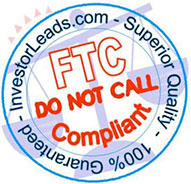Financial Leads Information 4
Want to make your marketing campaign a success?
Then you need to use financial sales leads that are customized for your specific industry.
Warren Buffett: How He Does It
Did you know that a $10,000 investment in Berkshire Hathaway in 1965, the year Warren Buffett took control of it, would grow to be worth nearly $30 million by 2005? By comparison, $10,000 in the S&P 500 would have grown to only about $500,000. Whether you like him or not, Buffett’s investment strategy is arguably the most successful ever. With a sustained compound return this high for this long, it’s no wonder Buffett’s legend has swelled to mythical proportions. But how the heck did he do it? In this article, we’ll introduce you to some of the most important tenets of Buffett’s investment philosophy.
Buffett’s Philosophy
Warren Buffett descends from the Benjamin Graham school of value investing. Value investors look for securities with prices that are unjustifiably low based on their intrinsic worth. When discussing stocks, determining intrinsic value can be a bit tricky as there is no universally accepted way to obtain this figure. Most often intrinsic worth is estimated by analyzing a company’s fundamentals. Like bargain hunters, value investors seek products that are beneficial and of high quality but underpriced. In other words, the value investor searches for stocks that he or she believes are undervalued by the market. Like the bargain hunter, the value investor tries to find those items that are valuable but not recognized as such by the majority of other buyers.
Warren Buffett takes this value investing approach to another level. Many value investors aren’t supporters of the efficient market hypothesis, but they do trust that the market will eventually start to favor those quality stocks that were, for a time, undervalued. Buffett, however, doesn’t think in these terms. He isn’t concerned with the supply and demand intricacies of the stock market. In fact, he’s not really concerned with the activities of the stock market at all. This is the implication this paraphrase of his famous quote : “In the short term the market is a popularity contest; in the long term it is a weighing machine.”(see What Is Warren Buffett’s Investing Style?)
He chooses stocks solely on the basis of their overall potential as a company – he looks at each as a whole. Holding these stocks as a long-term play, Buffett seeks not capital gain but ownership in quality companies extremely capable of generating earnings. When Buffett invests in a company, he isn’t concerned with whether the market will eventually recognize its worth; he is concerned with how well that company can make money as a business. (Interested in what companies Warren Buffett is buying and selling? Check out Coattail Investor, a subscription product tracking some of the best investors in the world.)
Buffett’s Methodology
Here we look at how Buffett finds low-priced value by asking himself some questions when he evaluates the relationship between a stock’s level of excellence and its price. Keep in mind that these are not the only things he analyzes but rather a brief summary of what Buffett looks for:
1. Has the company consistently performed well?
Sometimes return on equity (ROE) is referred to as “stockholder’s return on investment”. It reveals the rate at which shareholders are earning income on their shares. Buffett always looks at ROE to see whether or not a company has consistently performed well in comparison to other companies in the same industry. ROE is calculated as follows:
= Net Income / Shareholder’s Equity
Looking at the ROE in just the last year isn’t enough. The investor should view the ROE from the past five to 10 years to get a good idea of historical performance.
2. Has the company avoided excess debt?
The debt/equity ratio is another key characteristic Buffett considers carefully. Buffett prefers to see a small amount of debt so that earnings growth is being generated from shareholders’ equity as opposed to borrowed money. The debt/equity ratio is calculated as follows:
= Total Liabilities / Shareholders’ Equity
This ratio shows the proportion of equity and debt the company is using to finance its assets, and the higher the ratio, the more debt – rather than equity – is financing the company. A high level of debt compared to equity can result in volatile earnings and large interest expenses. For a more stringent test, investors sometimes use only long-term debt instead of total liabilities in the calculation above.
3. Are profit margins high? Are they increasing?
The profitability of a company depends not only on having a good profit margin but also on consistently increasing this profit margin. This margin is calculated by dividing net income by net sales. To get a good indication of historical profit margins, investors should look back at least five years. A high profit margin indicates the company is executing its business well, but increasing margins means management has been extremely efficient and successful at controlling expenses.
4. How long has the company been public?
Buffett typically considers only companies that have been around for at least 10 years. As a result, most of the technology companies that have had their initial public offerings (IPOs) in the past decade wouldn’t get on Buffett’s radar (not to mention the fact that Buffett will invest only in a business that he fully understands, and he admittedly does not understand what a lot of today’s technology companies actually do). It makes sense that one of Buffet’s criteria is longevity: value investing means looking at companies that have stood the test of time but are currently undervalued.
Never underestimate the value of historical performance, which demonstrates the company’s ability (or inability) to increase shareholder value. Do keep in mind, however, that the past performance of a stock does not guarantee future performance – the job of the value investor is to determine how well the company can perform as well as it did in the past. Determining this is inherently tricky, but evidently Buffett is very good at it.
5. Do the company’s products rely on a commodity?
Initially you might think of this question as a radical approach to narrowing down a company. Buffett, however, sees this question as an important one. He tends to shy away (but not always) from companies whose products are indistinguishable from those of competitors, and those that rely solely on a commodity such as oil and gas. If the company does not offer anything different than another firm within the same industry, Buffett sees little that sets the company apart. Any characteristic that is hard to replicate is what Buffett calls a company’s economic moat, or competitive advantage. The wider the moat, the tougher it is for a competitor to gain market share.
6. Is the stock selling at a 25% discount to its real value?
This is the kicker. Finding companies that meet the other five criteria is one thing, but determining whether they are undervalued is the most difficult part of value investing, and Buffett’s most important skill. To check this, an investor must determine the intrinsic value of a company by analyzing a number of business fundamentals, including earnings, revenues and assets. And a company’s intrinsic value is usually higher (and more complicated) than its liquidation value – what a company would be worth if it were broken up and sold today. The liquidation value doesn’t include intangibles such as the value of a brand name, which is not directly stated on the financial statements. (To learn more about Warren Buffett and the holdings his investment vehicle, Berkshire Hathaway, currently owns check out Coattail Investor.)
Once Buffett determines the intrinsic value of the company as a whole, he compares it to its current market capitalization – the current total worth (price). If his measurement of intrinsic value is at least 25% higher than the company’s market capitalization, Buffett sees the company as one that has value. Sounds easy, doesn’t it? Well, Buffett’s success, however, depends on his unmatched skill in accurately determining this intrinsic value. While we can outline some of his criteria, we have no way of knowing exactly how he gained such precise mastery of calculating value. (To learn more about the value investing strategy of selecting stocks, check out our Guide To Stock-Picking Strategies.)
Conclusion
As you have probably noticed, Buffett’s investing style, like the shopping style of a bargain hunter, reflects a practical, down-to-earth attitude. Buffett maintains this attitude in other areas of his life: he doesn’t live in a huge house, he doesn’t collect cars and he doesn’t take a limousine to work. The value-investing style is not without its critics, but whether you support Buffett or not, the proof is in the pudding. As of 2004, he holds the title of the second-richest man in the world, with a net worth of more $40 billion (Forbes 2004). Do note that the most difficult thing for any value investor, including Buffett, is in accurately determining a company’s intrinsic value.
For more detailed information on the topics below for our accredited email investor lists, visit the links using top of the page navigation menu.
exclusive:
We receive new investor names monthly and give a 180-day exclusive on each lead. We guarantee 100% that the sales leads are clean and “unhammered”.
100% satisfaction guarantee
Our leads are continuously cleaned and updated monthly in order to provide our clients with the cleanest, most accurate information possible on each investor. All of our investor leads are guaranteed to be 100% accurate. We will replace any record that is in error. 100% SATISFACTION GUARANTEED
pricing:
As a small company with low overhead, we are able to provide you with highly-qualified investors at very competitive prices. If you find a lower price, please let us know. We will beat any advertised price, just ask!
delivery:
We can E-mail your leads to you immediately, receive your leads within 1 hour, no shipping charges (for special orders delivery time may vary).
For any printed material (3×4 Cards, Paper, Mailing Labels) overnight delivery available upon request: UPS, FedEx, DHL, USPS
payment:
We accept the following payment methods: Visa, Master Card, AMEX, Discover, Company Check, Money Order, Cashiers Check, Wire Transfer, WesternUnion, Paypal.
To send money to us via Pay Pal please send your payments to: Info @ Investor Leads.com (without the spaces)
To contact our main office:
voice: 561-208-6060
fax: 877-315-4146
e-mail: info @ investor leads.com (please remove the extra spaces)
1438 W Lantana Rd Ste 275
Lantana, FL 33462



